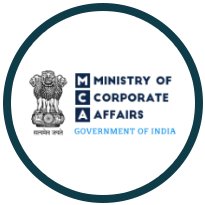

The GST (Goods and Services Tax) regime introduced a unified tax structure in India, simplifying the taxation process for businesses across the nation. As part of this system, taxpayers are required to file their GST returns periodically, ensuring transparency and accountability. One such crucial return is the GST Annual Return, which consolidates a taxpayer’s financial information for the entire financial year. In this article, we will delve into the significance of the GST Annual Return, explore its key components, and provide insights into the various aspects of filing this return.
The GST Annual Return serves as a comprehensive summary of a taxpayer’s inward and outward supplies, input tax credit, and taxes paid during a financial year. It consolidates the information reported in the regular GST returns filed throughout the year and presents it in a structured manner. The annual return offers a holistic view of a taxpayer’s financial transactions and facilitates the reconciliation of GST data with the taxpayer’s financial statements.
The GST Annual Return holds immense importance for businesses as it plays a vital role in ensuring compliance with the GST laws. By filing this return, taxpayers demonstrate their adherence to the regulatory requirements and showcase the accuracy and consistency of their financial records. It enables tax authorities to verify the information provided by taxpayers and identify any discrepancies or potential cases of tax evasion. Additionally, the annual return aids in streamlining the audit process and assists in assessing a taxpayer’s overall tax liability.
Due Date and Filing Requirements
The due date for filing the GST Annual Return is generally December 31st of the subsequent financial year. However, it is essential to stay updated with any official notifications or extensions issued by the tax authorities. Failing to comply with the filing deadline can attract penalties and legal consequences.
GSTR9: Annual Return for Regular Taxpayers
GSTR9 is the annual return to be filed by regular taxpayers registered under GST. It captures comprehensive details of inward and outward supplies, input tax credits availed, and taxes paid during the financial year. This return comprises various sections requiring taxpayers to provide relevant information meticulously.
GSTR9A: Annual Return for Composition Scheme Taxpayers
Taxpayers registered under the Composition Scheme are required to file GSTR9A, the annual return specifically designed for them. This return includes summarized information related to turnover, taxes paid, and composition scheme-related particulars.
GSTR9C: Reconciliation Statement and Certification
GSTR9C is an additional reconciliation statement that certain taxpayers need to file along with GSTR9. It involves a certified reconciliation of the taxpayer’s financial statements with the GST returns filed during the financial year. This return is applicable to taxpayers with an annual turnover exceeding a specified threshold.
Who Needs to File GSTR9?
All regular taxpayers whose annual turnover exceeds a prescribed threshold are required to file GSTR9. This includes businesses registered under the regular scheme, excluding Composition Scheme taxpayers, Input Service Distributors, NonResident Taxable Persons, and Casual Taxable Persons.
Details Required in GSTR9
GSTR9 mandates taxpayers to provide comprehensive information, including the turnover, outward supplies, inward supplies liable to reverse charge, input tax credit, taxes paid, and more. The return must be filed for each GSTIN (Goods and Services Tax Identification Number) under a single PAN (Permanent Account Number).
Common Errors to Avoid
While filing GSTR9, taxpayers must exercise caution to avoid common errors. Some common mistakes include incorrect reporting of turnover, failure to include all outward supplies, incorrect classification of inward supplies, and mismatches between books of accounts and GST returns. Diligent review and reconciliation of data can help prevent such errors.
Eligibility for Composition Scheme:
The Composition Scheme is designed for small businesses with a turnover below a specified threshold. Taxpayers who opt for this scheme are required to file GSTR9A. The scheme provides certain relaxations in compliance requirements and offers a simpler tax structure.
Details Required in GSTR9A:
GSTR9A for Composition Scheme taxpayers seeks summarized information related to turnover, taxes paid, and composition scheme-related particulars. The return should be filed for each GSTIN under a single PAN. It is important to ensure accurate reporting of turnover and payment of taxes to avoid penalties.
Advantages of Composition Scheme:
The Composition Scheme offers several benefits to eligible businesses. It simplifies compliance by reducing the frequency of returns, provides relief from maintaining detailed records, and enables businesses to pay taxes at a lower rate. However, businesses under the Composition Scheme must carefully assess their eligibility and evaluate the impact on their operations before opting for this scheme.
Purpose of GSTR9C:
GSTR9C serves the purpose of reconciling the financial statements of taxpayers with the GST returns filed during the financial year. It requires taxpayers to obtain a certification from a Chartered Accountant, validating the accuracy and correctness of the reconciliation statement.
Reconciliation of Financial Statements and GST Returns:
Taxpayers filing GSTR9C need to reconcile the turnover, taxes paid, and input tax credit reported in their financial statements with the corresponding figures in their GST returns. Any discrepancies or variations must be appropriately addressed and rectified before filing the return.
Appointment of a Chartered Accountant:
Filing GSTR9C requires the engagement of a Chartered Accountant (CA) who will conduct the necessary reconciliation, verify the correctness of the information provided, and provide the certification. The CA’s role is crucial in ensuring accuracy, compliance, and transparency in the reconciliation process.
Filing the GST Annual Return offers several benefits to taxpayers. It promotes transparency, aids in reconciliation, and helps in identifying discrepancies or errors in tax data. Additionally, it facilitates the assessment of a taxpayer’s overall tax liability, simplifies the audit process, and ensures compliance with regulatory requirements.
To ensure a smooth and error-free filing process, taxpayers can follow these tips:
Q1. Is the filing of the GST Annual Return mandatory for all taxpayers?
A: The filing of the GST Annual Return is mandatory for regular taxpayers whose annual turnover exceeds the specified threshold.
Q2. What are the consequences of not filing the GST Annual Return?
A: Noncompliance with the filing requirements may attract penalties, fines, and legal consequences imposed by the tax authorities.
Q3. Can a taxpayer revise the GST Annual Return once filed?
A: No, the GST Annual Return cannot be revised once it is filed. It is crucial to ensure accuracy and diligence before submission.
Q4. What is the role of a Chartered Accountant in filing GSTR9C?
A: A Chartered Accountant plays a crucial role in reconciling financial statements with GST returns and providing the necessary certification.
Q5. Are there any relaxations or simplified compliance requirements for Composition Scheme taxpayers?
A: Yes, the Composition Scheme offers certain relaxations, reduced compliance requirements, and a simpler tax structure for eligible businesses with a turnover below the prescribed threshold.
Q6. What is the deadline for filing the GST Annual Return?
A: The deadline for filing the GST Annual Return is generally December 31st of the subsequent financial year. However, it is important to stay updated with any official notifications or extensions issued by the tax authorities.
Q7. Can a taxpayer file the GST Annual Return without filing all the regular GST returns for the financial year?
A: No, it is necessary to file all the regular GST returns for the financial year before filing the GST Annual Return.
Q8. What happens if there are discrepancies between the financial statements and the GST returns while filing GSTR9C?
A: In case of discrepancies, taxpayers should rectify the errors before filing GSTR9C. It is crucial to ensure accurate reconciliation between the financial statements and the GST returns.
Q9. Are there any penalties for late filing of the GST Annual Return?
A: Late filing of the GST Annual Return may attract penalties, including fines and interest on delayed filing. It is important to adhere to the prescribed deadline to avoid such penalties.
Q10. Can a taxpayer claim input tax credit in the GST Annual Return?
A: No, the GST Annual Return is not the platform for claiming input tax credit. The input tax credit can be claimed in the regular GST returns filed during the financial year.
Q11. Can a taxpayer revise the GSTR9 or GSTR9A after filing?
A: No, once filed, GSTR9 and GSTR9A cannot be revised. It is important to review the information and ensure accuracy before filing.
Q12. Are there any simplifications available for small taxpayers while filing the GST Annual Return?
A: Yes, the tax authorities have introduced a simplified version of the GST Annual Return, known as the Sahaj and Sugam schemes, for small taxpayers meeting specified criteria.
Q13. Can a taxpayer claim credit for taxes paid in other states in the GST Annual Return?
A: Yes, taxpayers can claim the input tax credit for taxes paid in other states in their GST Annual Return, subject to the fulfillment of certain conditions.
Q14. Is it mandatory to reconcile the turnover reported in the financial statements with the turnover reported in the GST Annual Return?
A: Yes, it is crucial to reconcile the turnover reported in the financial statements with the turnover reported in the GST Annual Return to ensure consistency and accuracy.
Q15. Can a taxpayer opt for the Composition Scheme in the middle of the financial year?
A: No, a taxpayer can opt for the Composition Scheme only at the beginning of the financial year and continue in the subsequent years, subject to meeting the eligibility criteria.
| Actual Price | |
|---|---|
| Offer Price | ₹5000/- |
| Your Savings | ₹3000(37.5%) |
Sandip Kumar(Director)
Nlamnetic Private Ltd.

Exceptional service, prompt execution, and impeccable support. FilingWay Private Limited made my Private Limited Company registration seamless and hassle-free. Highly satisfied !
Shahrukh(Director)
Skuas Pest Control

I've been relying on FilingWay Private Limited for monthly GST filing for my pest control business. Their consistent support and expertise in navigating the complex GST requirements have been invaluable. I highly appreciate their reliable service !
S Arun Shankar(Director)
Coderfriend OPC private ltd.

I am absolutely delighted with the exceptional service I received from FilingWay Private Limited for my One Person Company registration. Their professionalism, attention to detail, and clear communication made the process seamless. With their support, my dream of starting my own company became a reality !
Shivam Prasad(Director)
Soniwalia foods private ltd.

With exceptional finesse and diligent guidance, FilingWay Private Limited expertly handled the Private Limited Company registration for my restaurant. Truly impressed with their expertise and unwavering commitment !